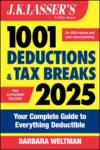Capital Gains and AMT
The top rate on most long-term capital gains and qualified dividends for regular tax purposes is 15%. But there's a trap: Taxpayers with such income who are subject to the alternative minimum tax (AMT) wind up effectively paying more than 15% tax on this type of income because such income bumps up other income in the AMT.
Take a recent case where a couple had $35,000 of qualifying dividends and $246,000 of net capital gains (long-term capital gains in excess of any capital losses). They reported a regular tax of $46,000. The IRS said they owed an additional $7,000 because of the AMT.
The couple argued that by following the instructions for Form 6251, Alternative Minimum Tax-Individuals, they would pay an effective rate on their gains and dividends in excess of 15%. The Tax Court has decided that the couple is wrong-they may pay an effective rate of tax higher than 15%, but the actual rate is capped at 15%, so they owe the additional tax.
In the computation of AMT, the standard deduction and personal exemptions are disallowed, along with tax preferences; certain adjustments may increase or decrease the tax base on which AMT is figured. However, gains and dividends continue to be taxed at a maximum of 15%. Thus, the additional tax under the AMT results from the disallowance of certain write-offs, not from a higher tax rate on gains and dividends.
Last December, the Tax Court decided a similar case (Weiss, 129 TC No. 18). The couple in that case had argued that qualified dividends should be disregarded in the calculation of the AMT. The court disagreed. Qualified dividends are part of alternative minimum taxable income (AMTI). Under the Tax Code, AMTI means taxable income increased by tax preference items, and increased or decreased for certain adjustment items. The AMT process, however, caps the tax rate on qualified dividends (and net capital gains). So while the receipt of the income may cause AMT to be owed with respect to other income (pushing AMTI over the exemption amount so that AMT results), the dividends and gains themselves are taxed separately and are not subject to a tax rate above 15%.
Source: Fritz, TC Summary Opinion 2008-81
Trust
An arrangement under which one person transfers legal ownership of assets to another person or corporation (the trustee) for the benefit of one or more third persons (beneficiaries).



